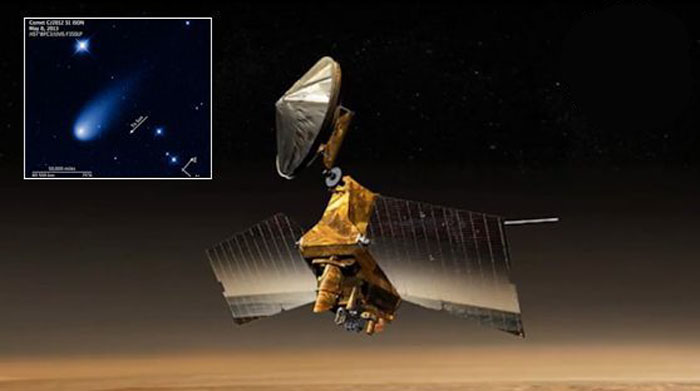,
10.01.2013
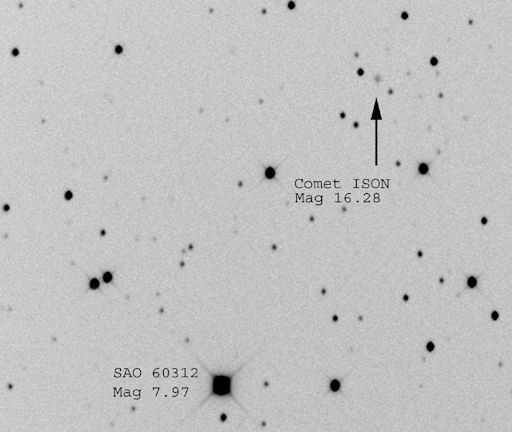
Foto: John Chumack
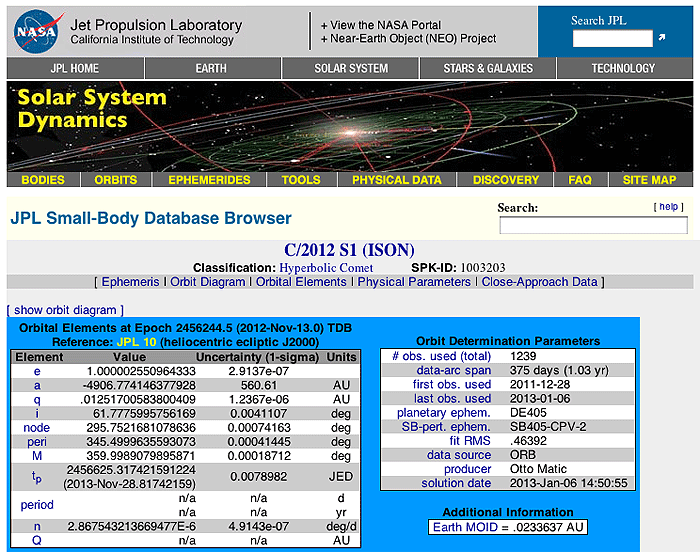
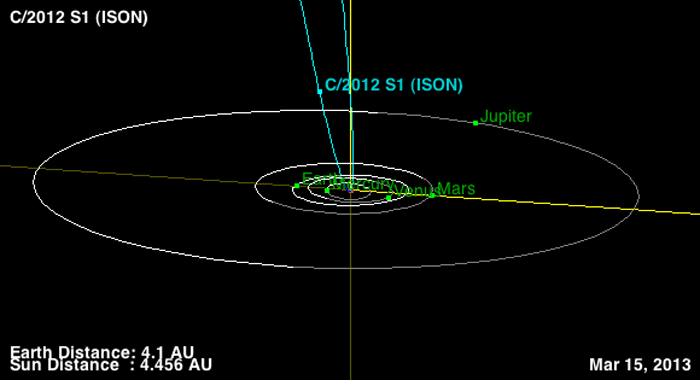
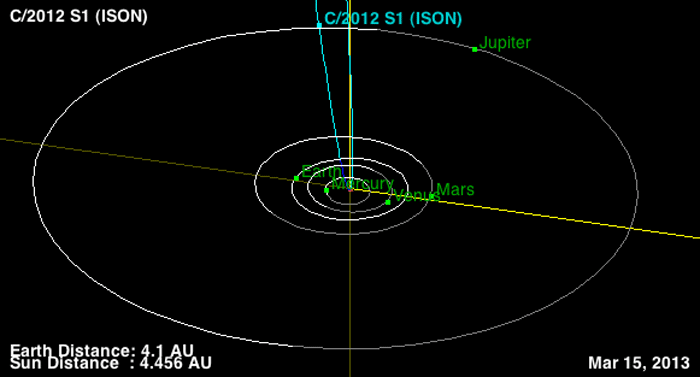

CREDIT: NASA/Swift/D. Bodewits, UMCP
A NASA spacecraft scanning for the most powerful explosions in the universe has captured a photo of Comet ISON, an icy wanderer that could potentially dazzle stargazers when it swings close to the sun later this year.
NASA's Swift satellite, which is typically used to track intense gamma-ray bursts from distant stars, photographed Comet ISON on Jan. 30, with the space agency unveiling the photo today (March 29). By tracking the comet over the last two months, Swift has allowed astronomers to learn new details about how large the comet is and how fast it is spewing out gas and dust.
"Comet ISON has the potential to be among the brightest comets of the last 50 years, which gives us a rare opportunity to observe its changes in great detail and over an extended period," said Lead Investigator Dennis Bodewits, an astronomer with University of Maryland at College Park (UMCP) who helped obtain the new image.Using images acquired over the last two months from Swift's Ultraviolet/Optical Telescope (UVOT), the team has made initial estimates of the comet's water and dust production and used them to infer the size of its icy nucleus.
"Comet ISON has the potential to be among the brightest comets of the last 50 years, which gives us a rare opportunity to observe its changes in great detail and over an extended period," said Lead Investigator Dennis Bodewits, an astronomer at UMCP.Additional factors, including an encounter with Mars followed by a scorching close approach to the sun, make comet ISON an object of special interest. In late February, at NASA's request, a team of comet experts initiated the Comet ISON Observing Campaign (CIOC) to assist ground- and space-based facilities in obtaining the most scientifically useful data.
Like all comets, ISON is a clump of frozen gases mixed with dust. Often described as "dirty snowballs," comets emit gas and dust whenever they venture near enough to the sun that the icy material transforms from a solid to gas, a process called sublimation. Jets powered by sublimating ice also release dust, which reflects sunlight and brightens the comet.
Typically, a comet's water content remains frozen until it comes within about three times Earth's distance to the sun. While Swift's UVOT cannot detect water directly, the molecule quickly breaks into hydrogen atoms and hydroxyl (OH) molecules when exposed to ultraviolet sunlight. The UVOT detects light emitted by hydroxyl and other important molecular fragments as well as sunlight reflected from dust.The Jan. 30 UVOT observations reveal that ISON was shedding about 112,000 pounds (51,000 kg) of dust, or about two-thirds the mass of an unfueled space shuttle, every minute. By contrast, the comet was producing only about 130 pounds (60 kg) of water every minute, or about four times the amount flowing out of a residential sprinkler system.
"The mismatch we detect between the amount of dust and water produced tells us that ISON's water sublimation is not yet powering its jets because the comet is still too far from the sun," Bodewits said. "Other more volatile materials, such as carbon dioxide or carbon monoxide ice, evaporate at greater distances and are now fueling ISON's activity."
At the time, the comet was 375 million miles (604 million km) from Earth and 460 million miles (740 million km) from the sun. ISON was at magnitude 15.7 on the astronomical brightness scale, or about 5,000 times fainter that the threshold of human vision.
Similar levels of activity were observed in February, and the team plans additional UVOT observations.
While the water and dust production rates are relatively uncertain because of the comet's faintness, they can be used to estimate the size of ISON's icy body. Comparing the amount of gas needed for a normal comet to blow off dust at the rate observed for ISON, the scientists estimate that the nucleus is roughly 3 miles (5 km) across, a typical size for a comet. This assumes that only the fraction of the surface most directly exposed to the sun, about 10 percent of the total, is actively producing jets.
An important question is whether ISON will continue to brighten at the same pace once water evaporation becomes the dominant source for its jets. Will the comet sizzle or fizzle?
"It looks promising, but that's all we can say for sure now," said Matthew Knight, an astronomer at Lowell Observatory in Flagstaff, Ariz., and a member of the Swift and CIOC teams. "Past comets have failed to live up to expectations once they reached the inner solar system, and only observations over the next few months will improve our knowledge of how ISON will perform."
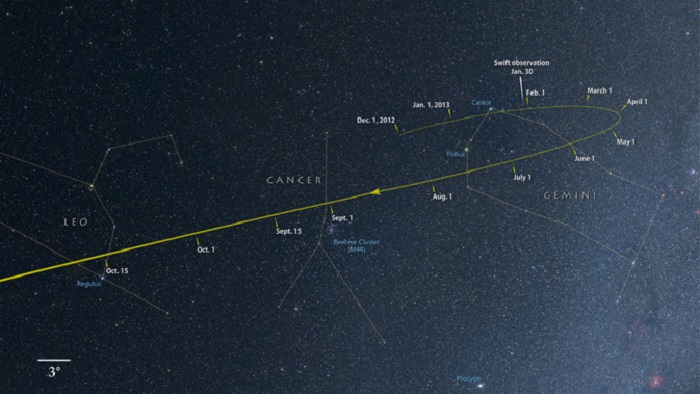
Formally designated C/2012 S1 (ISON), the comet was discovered on Sept. 21, 2012, by Russian astronomers Vitali Nevski and Artyom Novichonok using a telescope of the International Scientific Optical Network located near Kislovodsk.
The first of several intriguing observing opportunities occurs on Oct. 1, when the inbound comet passes about 6.7 million miles (10.8 million km) from Mars.
"During this close encounter, comet ISON may be observable to NASA and ESA spacecraft now working at Mars," said Michael Kelley, an astronomer at UMCP and also a Swift and CIOC team member. "Personally, I'm hoping we'll see a dramatic postcard image taken by NASA's latest Mars explorer, the Curiosity rover."
Fifty-eight days later, on Nov. 28, ISON will make a sweltering passage around the sun. The comet will approach within about 730,000 miles (1.2 million km) of its visible surface, which classifies ISON as a sungrazing comet. In late November, its icy material will furiously sublimate and release torrents of dust as the surface erodes under the sun's fierce heat, all as sun-monitoring satellites look on. Around this time, the comet may become bright enough to glimpse just by holding up a hand to block the sun's glare.
Sungrazing comets often shed large fragments or even completely disrupt following close encounters with the sun, but for ISON neither fate is a forgone conclusion.
"We estimate that as much as 10 percent of the comet's diameter may erode away, but this probably won't devastate it," explained Knight. Nearly all of the energy reaching the comet acts to sublimate its ice, an evaporative process that cools the comet's surface and keeps it from reaching extreme temperatures despite its proximity to the sun.
Following ISON's solar encounter, the comet will depart the sun and move toward Earth, appearing in evening twilight through December. It will swing past Earth on Dec. 26, approaching within 39.9 million miles (64.2 million km) or about 167 times farther than the moon.
Whether we'll look back on ISON as a "comet of the century" or as an overhyped cosmic dud remains to be seen, but astronomers are planning to learn the most they can about this unusual visitor no matter what happens.
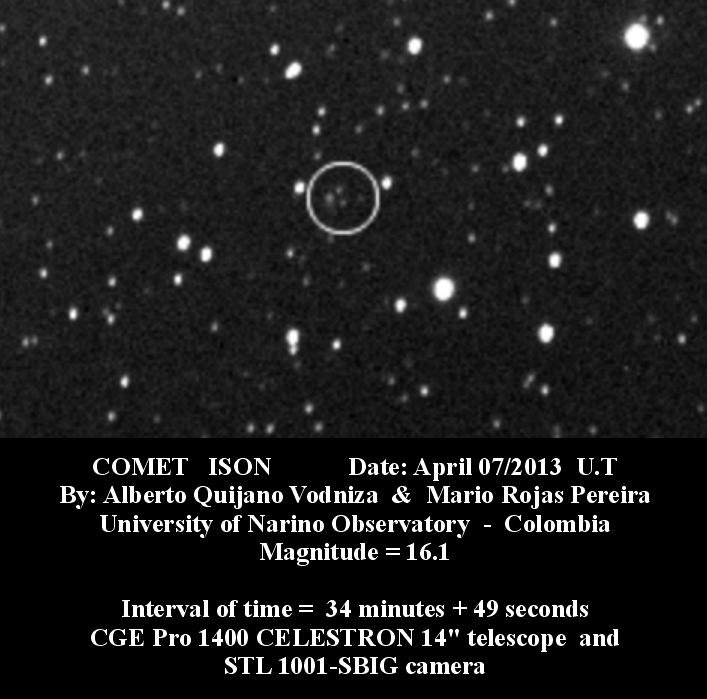
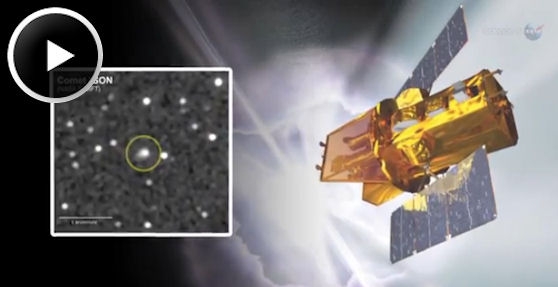
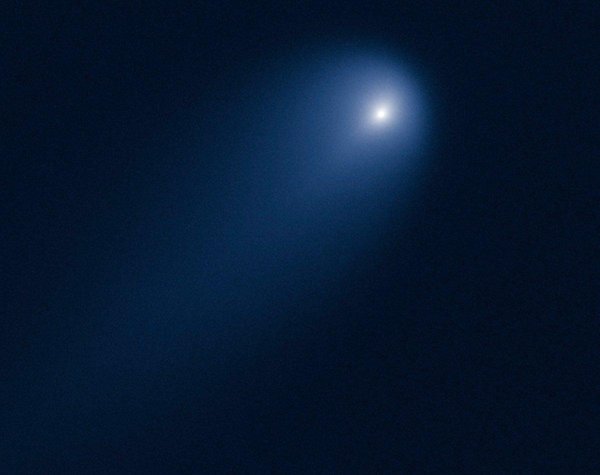
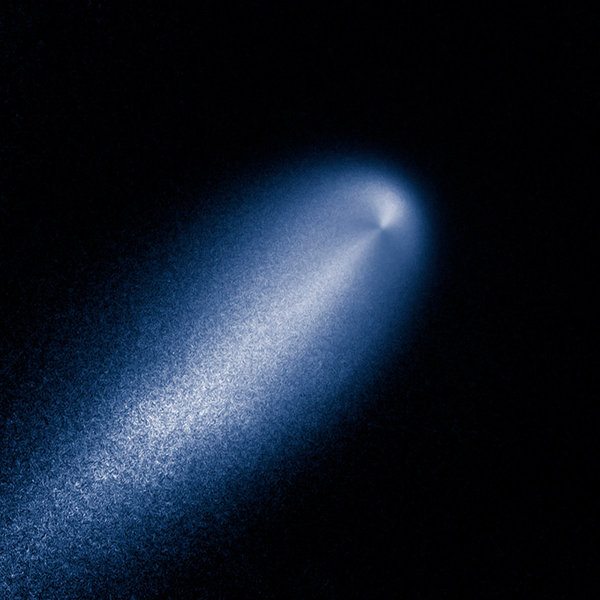
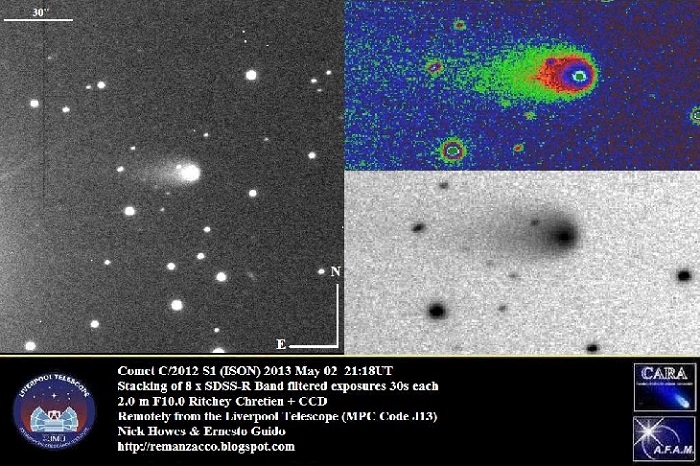
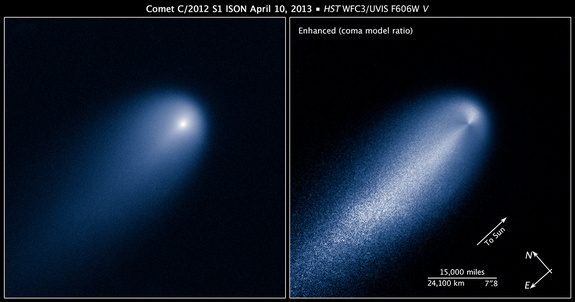
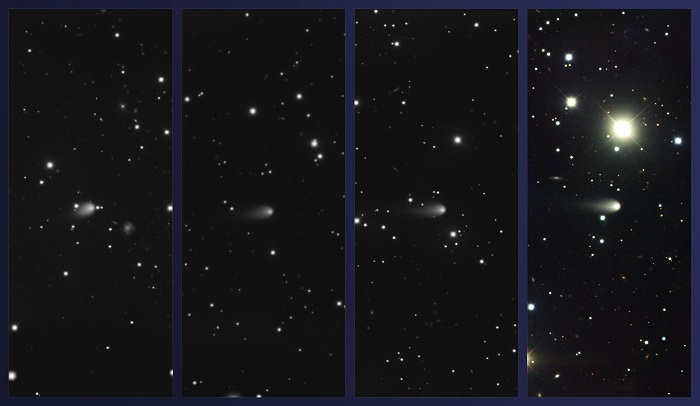
CREDIT: Gemini Observatory/AURA
A new series of images from Gemini Observatory shows Comet C/2012 S1 (ISON) racing toward an uncomfortably close rendezvous with the Sun. In late November the comet could present a stunning sight in the twilight sky and remain easily visible, or even brilliant, into early December of this year.
The time-sequence images, spanning early February through May 2013, show the comet’s remarkable activity despite its current great distance from the Sun and Earth. The information gleaned from the series provides vital clues as to the comet’s overall behavior and potential to present a spectacular show. However, it's anyone’s guess if the comet has the “right stuff” to survive its extremely close brush with the Sun at the end of November and become an early morning spectacle from Earth in early December 2013.
When Gemini obtained this time sequence, the comet ranged between roughly 455-360 million miles (730-580 million kilometers; or 4.9-3.9 astronomical units) from the Sun, or just inside the orbital distance of Jupiter. Each image in the series, taken with the Gemini Multi-Object Spectrograph at the Gemini North telescope on Mauna Kea, Hawai‘i, shows the comet in the far red part of the optical spectrum, which emphasizes the comet’s dusty material already escaping from what astronomers describe as a “dirty snowball.” Note: The final image in the sequence, obtained in early May, consists of three images, including data from other parts of the optical spectrum, to produce a color composite image.”
The images show the comet sporting a well-defined parabolic hood in the sunward direction that tapers into a short and stubby tail pointing away from the Sun. These features form when dust and gas escape from the comet’s icy nucleus and surround that main body to form a relatively extensive atmosphere called a coma. Solar wind and radiation pressure push the coma’s material away from the Sun to form the comet’s tail, which we see here at a slight angle (thus its stubby appearance).
Discovered in September 2012 by two Russian amateur astronomers, Comet ISON is likely making its first passage into the inner Solar System from what is called the Oort Cloud, a region deep in the recesses of our Solar System, where comets and icy bodies dwell. Historically, comets making a first go-around the Sun exhibit strong activity as they near the inner Solar System, but they often fizzle as they get closer to the Sun.
Sizing up Comet ISON
Astronomer Karen Meech, at the University of Hawaii’s Institute for Astronomy (IfA) in Honolulu, is currently working on preliminary analysis of the new Gemini data (as well as other observations from around the world) and notes that the comet’s activity has been decreasing somewhat over the past month.
“Early analysis of our models shows that ISON’s brightness through April can be reproduced by outgassing from either carbon monoxide or carbon dioxide. The current decrease may be because this comet is coming close to the Sun for the first time, and a “volatile frosting” of ice may be coming off revealing a less active layer beneath. It is just now getting close enough to the Sun where water will erupt from the nucleus revealing ISON’s inner secrets,” says Meech.
“Comets may not be completely uniform in their makeup and there may be outbursts of activity as fresh material is uncovered,” adds IfA astronomer Jacqueline Keane. “Our team, as well as astronomers from around the world, will be anxiously observing the development of this comet into next year, especially if it gets torn asunder, and reveals its icy interior during its exceptionally close passage to the Sun in late November.”
NASA’s Swift satellite and the Hubble Space Telescope (HST) have also imaged Comet ISON recently in this region of space. Swift’s ultraviolet observations determined that the comet’s main body was spewing some 850 tons of dust per second at the beginning of the year, leading astronomers to estimate the comet’s nucleus diameter is some 3-4 miles (5-6 kilometers). HST scientists concurred with that size estimate, adding that the comet’s coma measures about 3100 miles (5000 km) across.
The comet gets brighter as the outgassing increases and pushes more dust from the surface of the comet. Scientists are using the comet’s brightness, along with information about the size of the nucleus and measurements of the production of gas and dust, to understand the composition of the ices that control the activity. Most comets brighten significantly and develop a noticeable tail at about the distance of the asteroid belt (about 3 times the Earth-Sun distance –– between the orbits of Mars and Jupiter) because this is when the warming rays of the Sun can convert the water ice inside the comet into a gas. This comet was bright and active outside the orbit of Jupiter — when it was twice as far from the Sun. This meant that some gas other than water was controlling the activity.
Meech concludes that Comet ISON “…could still become spectacularly bright as it gets very close to the Sun” but she cautions, “I’d be remiss, if I didn’t add that it’s still too early to predict what’s going to happen with ISON since comets are notoriously unpredictable.”
A Close Encounter
On November 28, 2013, Comet ISON will make one of the closest passes ever recorded as a comet grazes the Sun, penetrating our star’s million-degree outer atmosphere, called the corona, and moving to within 800,000 miles (1.3 million km) of the Sun’s surface. Shortly before that critical passage, the comet may appear bright enough for expert observers using proper care to see it close to the Sun in daylight.
What happens after that no one knows for sure. But if Comet ISON survives that close encounter, the comet may appear in our morning sky before dawn in early December and become one of the greatest comets in the last 50 years or more. Even if the comet completely disintegrates, skywatchers shouldn’t lose hope. When Comet C/2011 W3 (Lovejoy) plunged into the Sun’s corona in December 2011, its nucleus totally disintegrated into tiny bits of ice and dust, yet it still put on a glorious show after that event.
The question remains, are we in for such a show? Stay tuned…
Comet ISON: The View from the North and South
Regardless of whether Comet ISON becomes the “Comet of the Century,” as some speculate, it will likely be a nice naked-eye and/or binocular wonder from both the Northern and Southern Hemispheres in the weeks leading up to its close approach with the Sun.
By late October, the comet should be visible through binoculars as a fuzzy glow in the eastern sky before sunrise, in the far southeastern part of the constellation of Leo. By early November, the comet should be a much finer binocular object. It will steadily brighten as it drifts ever faster, night by night, through southern Virgo, passing close to the bright star Spica. It is during the last half of the month that observations will be most important, as the comet edges into Libra and the dawn, where it will brighten to naked-eye visibility and perhaps sport an obvious tail.
The comet reaches perihelion (the closest point in its orbit to the Sun) on November 28th, when it will also attain its maximum brightness, and perhaps be visible in the daytime. If Comet ISON survives perihelion, it will swing around the Sun and appear as both an early morning and early evening object from the Northern Hemisphere. The situation is less favorable from the Southern Hemisphere, as the comet will set before the Sun in the evening and rise with the Sun in the morning.
By December 10th, and given that everything goes well, Comet ISON may be a fine spectacle in the early morning sky as viewed from the Northern Hemisphere. Under dark skies, it may sport a long tail stretching straight up from the eastern horizon, from the constellations of Ophiuchus to Ursa Major. The comet will also be visible in the evening sky during this time but with its tail appearing angled and closer to the horizon.
Quelle: Gemini-Observatory
.
Update: 1.07.2013
.
.
Update: 3.07.2013
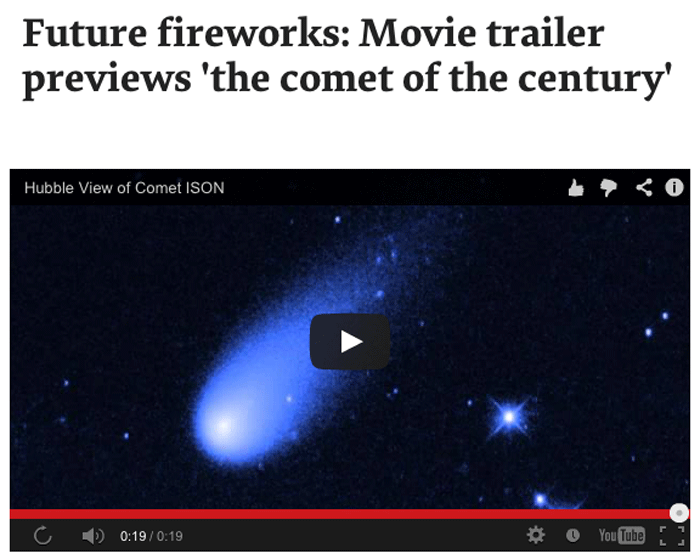
http://www.youtube.com/watch?v=5YAOaDBx3qo
.
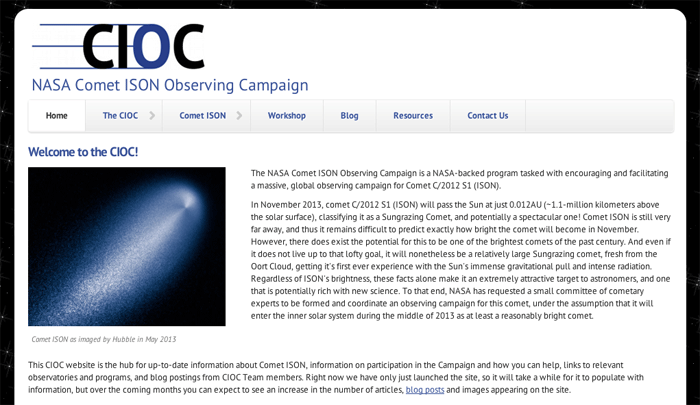
.
Update: 16.07.2013
.
A comet’s journey through the solar system is perilous and violent. A giant ejection of solar material from the sun could rip its tail off. Before it reaches Mars -- at some 230 million miles away from the sun -- the radiation of the sun begins to boil its water, the first step toward breaking apart. And, if it survives all this, the intense radiation and pressure as it flies near the surface of the sun could destroy it altogether.
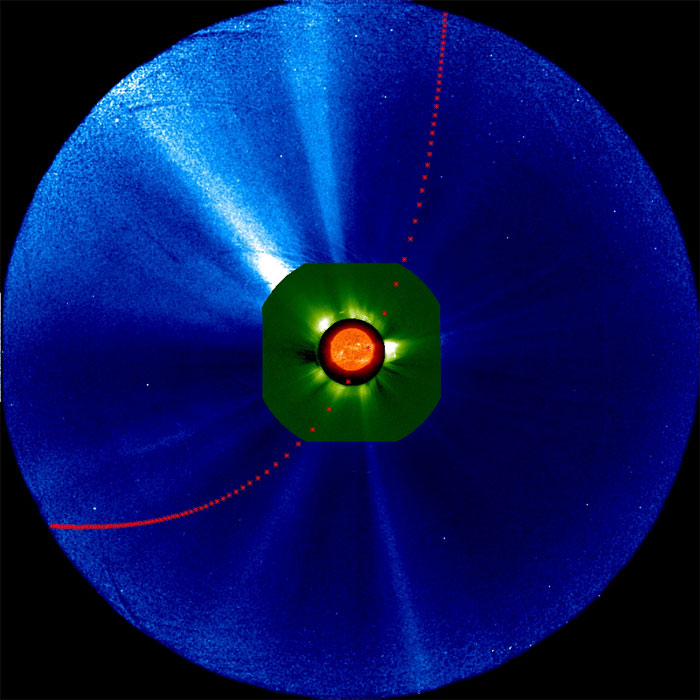
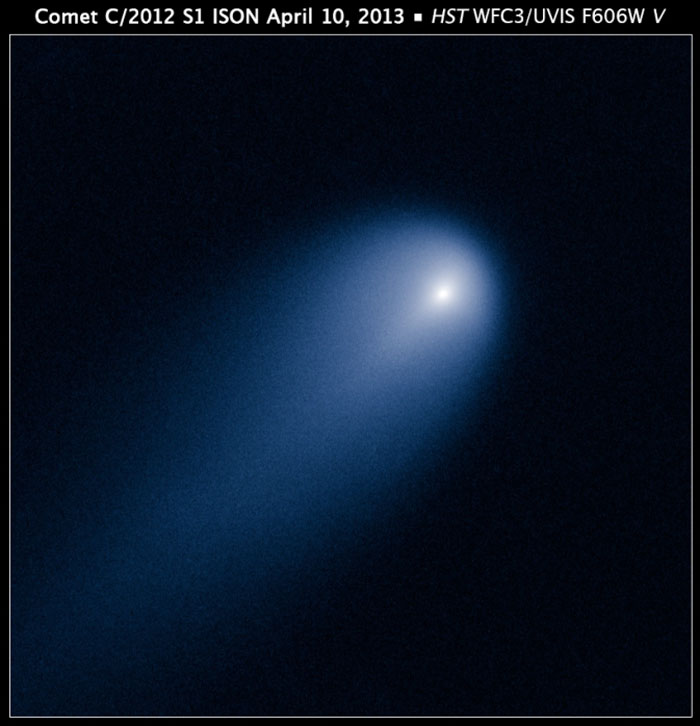
.
Update: 17.07.2013
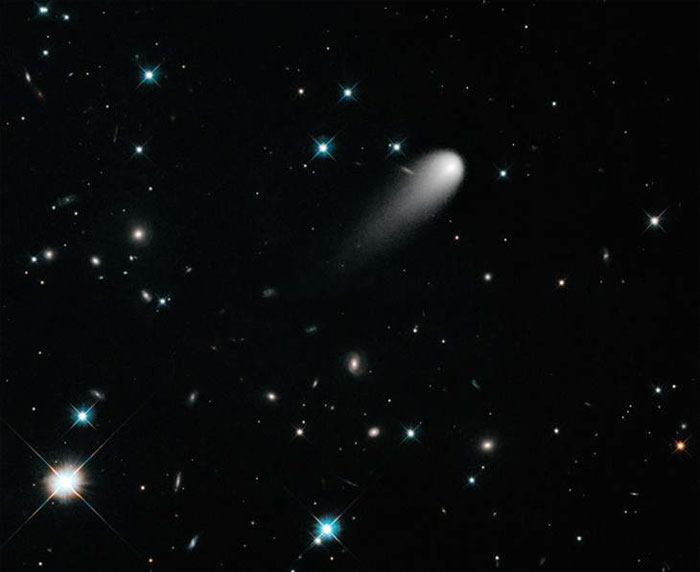
Comet ISON gets its day in the sun
Quelle: NBC
.
Update: 23.07.2013
.
NASA`s Spitzer-Teleskop beobachtet bei Komet ISON Gas Emission
.
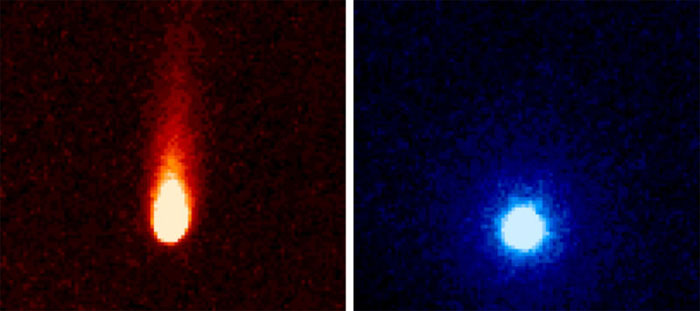
These images from NASA's Spitzer Space Telescope of C/2012 S1 (Comet ISON) were taken on June 13, when ISON was 310 million miles (about 500 million kilometers) from the sun. (Credit: NASA/JPL-Caltech/JHUAPL/UCF)
.
Astronomers using NASA's Spitzer Space Telescope have observed what most likely are strong carbon dioxide emissions from Comet ISON ahead of its anticipated pass through the inner solar system later this year.
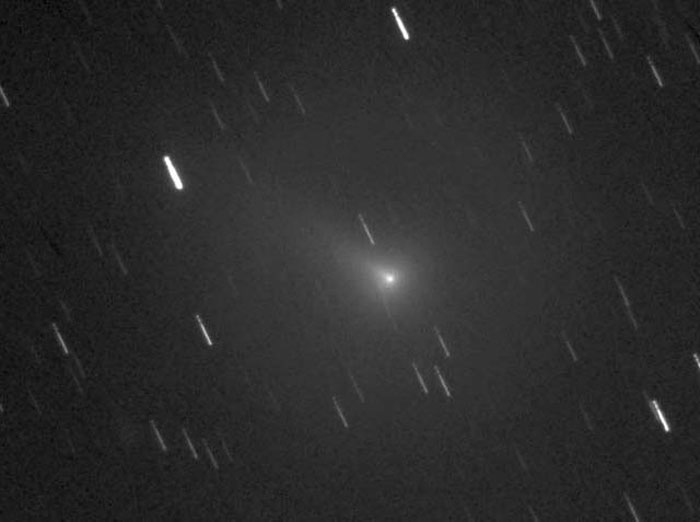
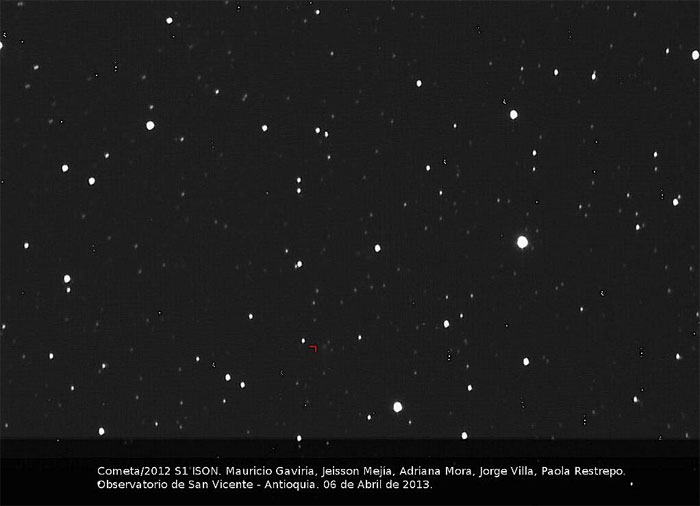
Japanese public broadcaster NHK has collaborated with Japan’s space agency, JAXA, to develop a super-sensitive 4K camera system intended to catch footage of what’s being called “the comet of the century.”
The camera was loaded onto the International Space Station (ISS) last Sunday, with an aim towards capturing footage of the comet C/2012 S, otherwise known as ISON. The comet, discovered in September of 2012, will pass close to Earth in December and, with its status as a “sungrazer,” is expected to emit great quantities of dust and gas on its first approach to the sun. According to NASA, if the comet survives its journey to the sun, it could appear to glow as bright as the moon and be visible in broad daylight.
JAXA astronaut Koichi Wakata will be aboard the ISS in December and will be manning the camera. NHK plans to broadcast the images in December, and via a release, the broadcaster says it anticipates “many breathtaking images, including pictures of the comet shining over the dazzling nightscape of the U.S. East Coast.”
This marks the first time that a 4K camera has been brought onboard the ISS. NHK and JAXA have collaborated on previous space shoots on board the space station, including 2006′s first HDTV broadcast from the site, and the use of a ultra-high sensitivity camera system in 2011 to capture meteor showers and auroras for the international copro Cosmic Shore.
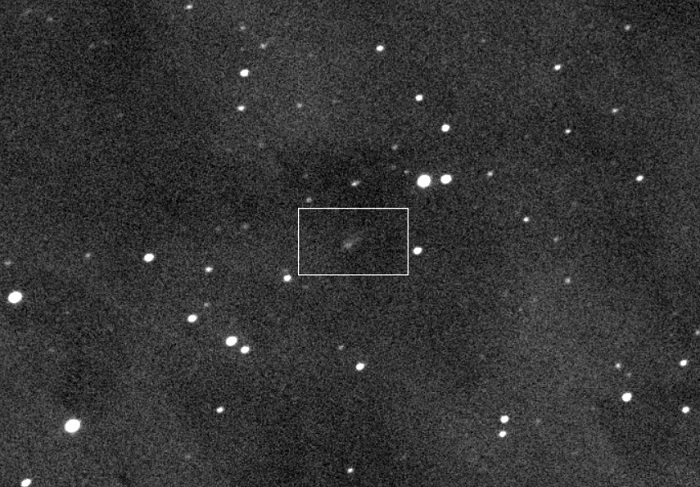
Comet ISON Spotted Again, Faintly
That's about 2 magnitudes fainter than the comet "should" be, compared to the formula that first led astronomers to predict it would become a grand naked-eye sight before dawn in early December. It's no improvement on the 2-magnitude deficit the comet was showing when astronomers last had good looks at it around the end of May.
Here is Gary's detailed and thorough report and analysis of his observation.
There too (at the bottom) are three new light-curve predictions for the coming months, based on three model formulas. The short version: the comet could still turn out to be fairly good, or it might never reach naked-eye visibility at all.
Sky & Telescope's longtime comet analyst John Bortle writes us:
ISON is currently about at the distance from the Sun where water ice sublimation would be expected to be taking over in the comet's photometric development. That the comet continues to appear as faint as it does implies that its intrinsic brightness (absolute magnitude) is low and that the nucleus is probably small and relatively inactive.
Past performances by dynamically "new" comets [newcomers to the inner solar system], as ISON has turned out to be, have typically been pretty lackluster. With very few exceptions, these comets brighten only very slowly [as they approach, after appearing promising when farther out].
In the lightcurve prediction graph presented by Scarmato, Morales and Gary, their green line corresponds to typical "new" comet behavior. Note that this suggests the comet's brightness barely ever breaks the naked-eye barrier, even at perihelion!
Further, if one accepts anything like the green line's absolute magnitude of +9.73 for the comet, then ISON has no chance of surviving its perihelion, based on my paper "Post-Perihelion Survival of Comets with Small q" (International Comet Quarterly, Vol. 13, No. 3, July 1991).
So... things are looking ever more bleak for chances of any grand display to be put on by ISON come this December. Still, I wouldn't fully commit to such until I see some actual visual observations reported.
Update Aug. 13: A disagreement has emerged on discussion lists about whether Gary's measurement of magnitude 14.3 refers to the comet's total magnitude or just its nucleus. Gary tells us, "My photometry aperture circle has a diameter of 28 arcseconds, so I think this would include the entire coma and part of the tail." In other words, practically all of the comet's light. He goes into full detail about this here.
Comet ISON to fly by Mars
